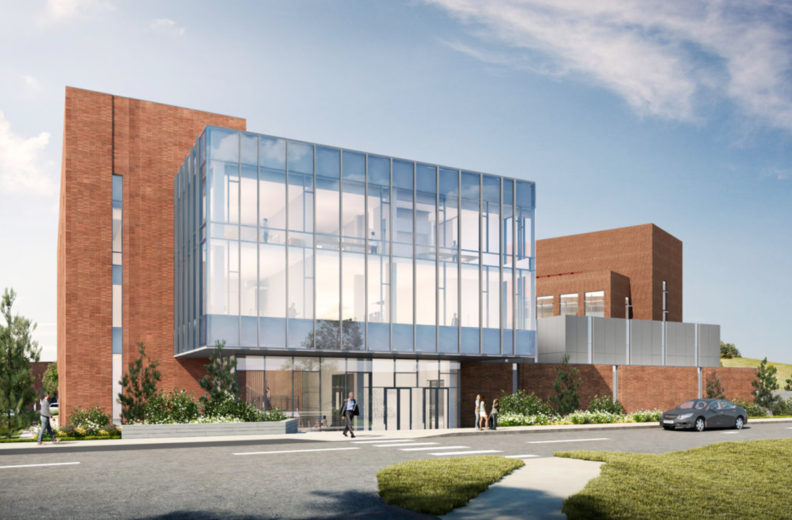Washington State to build new WADDL facility
Animal disease diagnostic laboratory to support animal and human health in Washington region.
September 19, 2018

Washington State University’s College of Veterinary Medicine broke ground Sept. 15 on a new facility for the Washington Animal Disease Diagnostic Laboratory (WADDL), creating a new wing of the Paul G. Allen Center for Global Animal Health.
According to the announcement, WADDL marks a new era in diagnostic testing and disease surveillance, supporting public health and food security, animal health and the success of thriving livestock industries. WADDL serves as a first-alert system for both animal and human health.
Washington State said the new facility will allow WADDL to continue to serve as a critical resource for the state, region and nation, ensuring that the university remains an industry leader in disease surveillance, diagnostics, innovative research and education on a global scale. When completed in 2021, the WADDL facility will provide the enhanced sample security and workflow, biosafety and biosecurity required for increased testing capacity, discovery and regulatory compliance, Washington State said.
“Since 1974, WADDL has served the state’s animal agriculture industry as Washington’s only accredited lab combating foreign animal diseases, zoonotic diseases and foodborne illnesses,” said Tim Baszler, executive director of WADDL and head of global disease surveillance. “We are grateful for the continued support and trust of the state legislature, national partners such as (the U.S. Department of Agriculture, Food & Drug Administration, Centers for Disease Control & Prevention) and others, as well as our food industry customers.”
WADDL conducts more than 210,000 tests annually, and that number is growing, the university said. Since 1974, WADDL’s testing demand has increased more than 250%, with 2.5 million tests conducted in the last 10 years. WADDL is the only animal health diagnostic laboratory in Washington state that is officially sanctioned and funded to provide comprehensive animal, food and environmental surveillance for diseases such as influenza, tuberculosis, West Nile encephalitis, bovine spongiform encephalopathy (BSE) and foot and mouth disease. As such, WADDL is a critical resource for other state and federal agencies, including the Washington departments of agriculture and health.
Washington State also noted that WADDL serves as the first-alert system by maintaining one of just 15 USDA National Animal Health Laboratory Network (NAHLN) Level 1 laboratories, FDA Veterinary Laboratory Investigation & Response Network and the CDC Laboratory Response Network for Bioterrorism. WADDL testing is vital for early disease detection, protecting public health and food security and protecting Washington’s $1.5 billion animal agriculture industry, the university said.
In 2014-15, WADDL detected the initial case of avian influenza in the U.S. and helped prevent devastating economic losses to Washington’s poultry industry.
The purpose for WADDL's disease detection and surveillance activities is to improve animal health, human health through detection of animal pathogens that can be transmitted to humans, food safety and promote interstate commerce and global trade for animal agriculture, the university explained.
For example, WADDL has been on the forefront of testing for viruses, bacteria and parasites that infect fish and other aquatic animals for more than 20 years. For aquaculture producers within Washington , this testing ensures that they can conduct uninterrupted intrastate, interstate and international commerce with Washington-grown products.
The new facility will optimize Paul G. Allen School for Global Animal Health research to develop 21st-century animal and human diagnostics tests, implement innovative infection disease surveillance tools and training the next generation of scientists and diagnosticians to advance global health security, Washington State said.
“Serving as a ‘living lab’ within the [Washington State] College of Veterinary Medicine, WADDL’s unique laboratories not only support research and discovery; the [college] also depends on it for the education of all veterinary students, health professionals, undergraduate and graduate students,” said Bryan Slinker, dean of Washington State College of Veterinary Medicine. “WADDL also underpins the training of those in the nation’s leading program veterinary laboratory diagnosticians of tomorrow.”
The new facility project for WADDL received $23 million in the 2018 legislative session to begin construction of the building. An additional $36.4 million request will be made to the 2019 legislature to complete the building. Washington State funded the pre-design and design of $1.9 million. The total cost for the new WADDL addition to the Allen Center is $61.9 million.
You May Also Like



